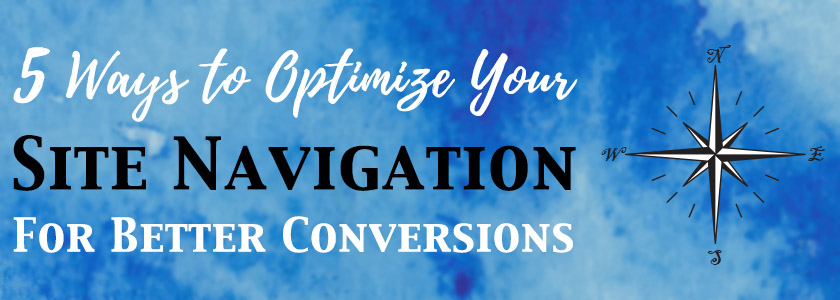
You may not realize it, but your website navigation plays a
huge role in the success of your website in converting visitors. And this
doesn’t just apply to the navigation on your homepage. Nearly 50% of visitors
who arrive at an internal page of your site use the navigation menu to adjust
themselves.
Your website navigation should give your visitors enough
options to find what they’re looking for, but not too many that they get lost
or overwhelmed.
In this article, we will look at five ways to make your
navigation more user-friendly and ultimately increasing your conversions.
1. Utilize keyword
research to choose relevant menu items
Keyword research shouldn’t be reserved for search engine
optimization or choosing blog topics. Since your menu items are often your most
important pages, make sure they’re optimized for popular, highly relevant
keywords.
For example, if you’re a florist, you might include navigation
links to what you see as your most important pages: Flowers, Gallery, Blog, and
Consultation form.
However, using Google’s Keyword Planner, you’ll find there are a
number of other categories you could potentially include in your
navigation, including:
- Wedding Flowers
- Flower Delivery
- Occasions
If you don’t offer the services you find using keyword
research, you obviously won’t want to include them your navigation. However,
knowing people are regularly searching for these phrases might make you
consider adding them to your product or service offerings.
2. Stay customer
focused
This tip goes hand-in-hand with using relevant keywords to
help guide your navigation. It’s easy to get caught up in running your business
and ignore why your customers are truly coming to your website. But when
planning your site navigation this can lead to confusion, frustration and
higher bounce rates.
If you focus too much on one section of your business, such
as your past work, you
could miss out on other important information that visitors are searching for,
such as pricing info, testimonials, or contact information.
3. Test different
menu styles
There are many navigation styles to choose from, including
drop-down menus, text links, breadcrumbs, and flyout menus. Many sites use more
than one style.
While you want your navigation to match the look and feel of
the rest of your site, keep in mind that looks aren’t everything. The style
that looks best to you (or even to your visitors) may not actually be the one
that results in the highest conversions.
Do some testing with your navigation. You may find it has a bigger
impact on your conversions than you think.
4. Be clear with your
wording
If the text you’re using for your navigation isn’t 100%
clear, you could lose visitors before they even reached a product page.
An example where this was a problem is StubHub. After they
did some usability testing, it was discovered that one link was causing major
confusion among their visitors. The link was intended to direct visitors back
to the ticket purchase page so they could complete their order and it read “See
Details”.
During the testing they found that visitors didn’t really
understand where the link would be taking them, so they didn’t click. Which
meant they would leave the site mid-way through their order.
After changing the “See Details” link to an orange button
that said “Go” they saw a 2.6% increase in conversions, which resulted in an
increase of several million dollars.
5. Use sub-navigation
and internal links
Sub-navigation menus are often used to display second-tier
items. They are typically either plain text links or links on a primary drop-down
menu.
These links help to display more information without
cluttering your main navigation. For instance, with our florist example, you
could utilize a drop down menu under an Occasions menu item to list important,
relevant items such as Birthday, Get Well Soon, or the closest holiday (which
you can switch out throughout the year so you don’t clutter the drop down
menu).
However, links in your navigation are not the only links
that matter. Links within your content should also direct visitors to relevant
content and products found elsewhere on your site. This not only helps spread
link juice throughout your site, it also provides a better experience for your
visitors. Remember though – only link to relevant
pages or offers, or both trust and conversions will suffer.
To wrap it up…
Your navigation should make it easy for your visitors to
find exactly what they’re looking for. Your menu, sub-navigation and internal
link structure should all work together to move visitors toward your ultimate
goal – conversions.
If you’re looking to create a beautiful website
that converts, contact us today using the contact form below or call us at
(407) 682-2222 to learn about our web development and design options.